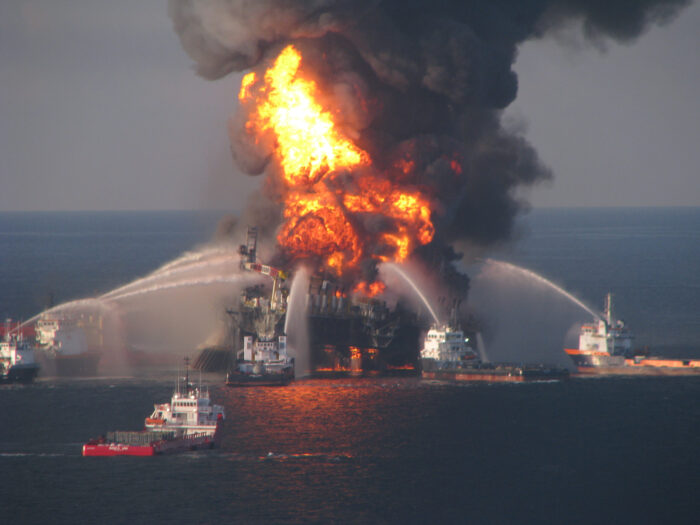The West’s Handling of the Pandemic & Climate Change Reveal Superficiality & Group Think

With the onset of the SARS-CoV-2 pandemic critical questions were NOT asked. What demographic is most susceptible to serious complications? Can the spread of a respiratory virus with infected asymptomatic individuals be stopped? If children without health problems are resistant to serious complications and there are millions at educational risk, is it sensible to close schools? Would there be negative long-lasting effects on society if lockdowns were initiated and what would be accomplished long term? Why did the establishment and the press suppress the Great Barrington Declaration, an alternative view against lockdowns and concentrating instead on protecting the vulnerable (Ref.1)? Was there any in-depth discussion and debate around these questions or did our political leaders make hasty decisions based more on electioneering slogans rather than careful analysis?
There is a similar superficial approach to eliminating the fossil fuel contribution to climate change while world-wide energy needs are increasing (Ref.2). Solar panels, wind turbines and an all-electric economy are critical to a future of carbon free energy production, yet their manufacture presently requires large amounts of fossil fuels and huge increases in metals (Ref.3,4). Is it then rationale for present Western Governments to enforce policies limiting fossil fuel production and mining that drive up the costs of electric cars, solar and wind devises to prohibitive levels? Wouldn’t it be advisable at this time of transition to have abundant fossil fuels as cheap as possible and encourage mining? Isn’t it likely that presently with concerns about climate change, Western Europe and recently the U.S. by limiting oil and natural gas production has made the remaining producers feel empowered, reaping increased profits? The prime example is Russia, who is using its oil and natural gas revenues to an energy poor Western Europe to finance a barbaric invasion of Ukraine, driving prices even higher.
Presently, wind and solar supply about 5% of total U.S. needs. Although there is much talk about solar and wind being greatly expanded to more than 30-40% of generation capacity, that would seem quite optimistic for the foreseeable future. Doesn’t this mean we need a resurgence of nuclear power for the U.S. and the world to become fossil fuel free? Nuclear presently produces about 8-9% of U.S electricity (Ref.5). If this is to become a reality will our political leaders expend the effort to convince the public of this necessity, changing views and finally dealing with a solution for waste disposal? The deployment of micro nuclear plants should be helpful (Ref.6,7).
The West needs leaders who are willing to have serious debates, presenting thoughtful possibilities to the public to decide the many issues involved with the transformation away from fossil fuels. Unlike our approach to the Covid-19 pandemic, that was more sloganeering, we must have the discipline to hear out the alternatives and elevate our discussion to reflect the complexity of the options. A recent op-ed in the Wall Street Journal also saw similarities between our superficial approach to the pandemic and addressing climate change. Newer vaccines were critical dealing with the virus, and the author saw future technological advances replacing fossil fuels (Ref.8). However, the conflicts involved will be more intense than what happened with the pandemic. The conversion of mans’ energy requirements from fossil fuels to non- carbon sources will be far more complex and difficult than dealing with SARS-CoV-2.
- Dr. Martin Kulldorff, Dr. Sunetra Gupta, Dr. Jay Bhattacharya, The Great Barrington Declaration, October 4, 2020, available at: https://gbdeclaration.org/ (accessed October 20, 2020)
- Ari Kahan, Schalk Cloete, EIA projects nearly 50% increase in world energy usage by 2050, led by growth in Asia, U.S. Energy Information Administration, September 24, 2019, available at: https://www.eia.gov/todayinenergy/detail.php?id=41433 (accessed April 12, 2022)
- Mark P. Mills, Mines, Minerals, and Green Energy: A Reality Check, Manhattan Institute, July 9, 2020, available at: https://www.manhattan-institute.org/mines-minerals-and-green-energy-reality-check#:~:text=Building%20wind%20turbines%20and%20solar%20panels%20to%20generate,deliver%20the%20same%20amount%20of%20energy%20to%20society (accessed April 17, 2021)
- Mark P. Mills, The Coming Green-Energy Inflation, WSJ, April 18, 2022, available at: https://www.wsj.com/articles/green-energy-makes-inflation-worse-minerals-copper-aluminum-graphite-lithium-commodity-markets-11650205511 (accessed April 18, 2022)
- U.S. energy facts explained, U.S. Energy Information Administration, May 14, 2021, available at: https://www.eia.gov/energyexplained/us-energy-facts/ (accessed April 12, 2022)
- Nathan Falde, Nuclear Waste Storage and Disposal Problems, Greentumble, June 14, 2018, available at: https://greentumble.com/nuclear-waste-storage-and-disposal-problems/ (accessed April 13, 2022)
- Lois Parshley, The countries building miniature nuclear reactors, BBC, March 9, 2020, available at: https://www.bbc.com/future/article/20200309-are-small-nuclear-power-plants-safe-and-efficient (accessed April 13, 2022)
- Tomas J. Philipson, What Climate Change Has in Common With Covid, WSJ, April 12, 2022, available at: https://www.wsj.com/articles/global-warming-covid-climate-change-pandemic-lockdown-mask-vaccine-mandate-philadelphia-new-york-carbon-emmissions-green-energy-cost-price-11649791427 (accessed April 12, 2022)









As long as independent thought is suppressed as arrogance (like those loose cannon MD’s) groupthink is inevitable.
Climate change…Millankovic cycles. It was much warmer in past than today. Good records for that..
We were almost starving plants with CO2LEVELS OF 180 TO 200. 400 PLUS NOW.10 PERCENT OF OUR WORLDGOT MORE GREEN,BETTER MORE ABUNDANT CROPS.THATS GOOD.
WINDMILLS KILL MILLIONS OF BIRDS,VERY LIMITED AREAS FOR EFFECTIVE USE. SAME WITH SOLAR..LIMITED AREAS TO GET PROPPER USE WITH CURRENTTECHNOLOGY..
NUCLEAR LETS TRY THORIUM POWER,SAFER THAN URANIUM AND PLUTONIUM REACTORS.CAN DISPOSE OF NUCLEAR WASTE TOO.ENOUGH THORIUMFOR ABOUT 1 BILLION YEARS,ON PLANET EARTH.SAFE,NO MELTDOWNS. CHEAP!
Still much for us primative humans to learn.
PW, Yes, especially our politicians. Ken
Follow the money.